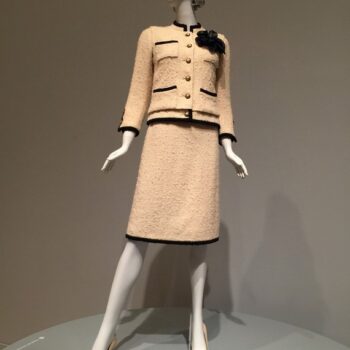What cleaning processes do thrift stores use on donated clothes?
August 16, 2024What cleaning processes do thrift stores use on donated clothes? Thrift stores have different approaches to handling donated clothes, largely dependent on their size, resources, and policies. Most major thrift chains like Goodwill, The Salvation Army, and other consignment shops follow a rigorous sorting protocol when donations arrive. Staff members sort through the items, removing any visibly soiled, damaged, or unsellable pieces. This primary step is crucial as it helps to filter out the less desirable donations right from the start.
What cleaning processes do thrift stores use on donated clothes?
When it comes to actual cleaning, the procedures differ significantly among thrift stores. Goodwill and The Salvation Army, two of the largest chains, generally don’t wash each donated item due to the sheer volume of donations they receive daily. Instead, they rely on the donors to submit clean and wearable clothes. These items are then sorted, tagged, and placed directly on the sales floor. Despite these steps, it’s still up to the buyers to ensure the items are thoroughly washed before wearing.
Smaller, boutique-style thrift stores or consignment shops may have more stringent cleaning protocols. Since these stores often curate their stock more selectively, they might invest in additional cleaning measures. This can include washing and sometimes even light repairs to ensure the items look their best for sale. These stores might also employ disinfection methods to eliminate any lingering germs or pests, giving shoppers a bit more peace of mind.
Online thrift stores like ThredUp operate slightly differently. While they usually do not wash the items themselves, they do have a rigorous inspection procedure in place. ThredUp sorts the clothes, lists them on their platform, and stores them in climate-controlled facilities until sold. The onus remains on the buyer to wash the items upon receipt.
It’s worth noting that while some high-volume thrift stores may struggle to clean every item, they often have policies to quarantine donations for a set period. This precautionary measure can significantly reduce the risk of any pests such as bed bugs making their way to the sales floor.
For thrift stores, hygiene and presentation are paramount, but the ultimate cleaning responsibility falls on the buyer. Proper laundering at home using high temperatures and disinfecting laundry additives ensures you enjoy your pre-loved treasures safely and stylishly.

Thrift store staff members sorting through piles of donated clothes, inspecting each item for quality and wearability.
Should you take any extra cleaning steps after buying thrift store clothes?
When you bring thrift store clothes home, taking extra cleaning steps ensures they’re not just fashionable but also safe to wear. Here’s your go-to guide on cleaning and sanitising your thrift store finds:
- Inspection: Start by inspecting each item carefully. Look for any visible stains, odours, or damages that might require special attention. Check pockets and seams for hidden dirt or debris. Identifying problematic areas upfront can help tailor your washing strategy.
- Separation: Next, sort your clothing. Separate whites from colours to prevent colour bleeding. Additionally, sort by fabric type – delicates like silk require different handling compared to durable pieces like denim or cotton.
- Choosing the Right Detergent: Pick a high-quality detergent suitable for the fabrics. For an extra sanitary boost, consider using a laundry disinfectant additive. These products offer an extra layer of cleanliness, ensuring that any lingering bacteria or microbes are thoroughly dealt with.
- Wash Settings: Set your washing machine to the appropriate temperature for the fabric type. Most fabrics can withstand warm water, which helps to kill bacteria and other germs without shrinking or damaging the fibres. For hardy fabrics like cotton, using hot water is beneficial.
- Drying Methods: After washing, drying is equally crucial. High heat from a tumble dryer can help kill off any remaining germs and is usually beneficial for robust fabrics. However, delicate materials might prefer being air-dried. Lay them flat on a clean surface to maintain their shape and avoid stretching.
For items with a persistent thrift store scent, incorporating vinegar or baking soda into your wash cycle can work wonders. Vinegar is fantastic for deodorising without leaving a lingering smell, while baking soda acts as a natural absorbent for odours.
When dealing with heavier items like coats or anything labelled “dry clean only,” consider taking them to a professional cleaner for the first clean. This ensures they are treated correctly and mitigates any risks of home washing mishaps. For garments you choose to dry clean at home, a handheld steamer can come in handy to freshen and kill bacteria without a full wash.
Silk, wool, and other delicate fabrics benefit from a gentler touch. Hand wash these items in cool water with a bit of sensitive-fabric detergent. Avoid wringing or twisting them, as this can damage the fibres. Instead, press water out gently and air-dry them flat.
The extra effort spent laundering your thrift store finds not only guarantees they are clean and safe to wear but also helps prolong their life, ensuring these vintage treasures can be cherished for years to come. With each wash, you breathe new life into pre-loved garments, embodying a blend of style, sustainability, and sensibility.

A washing machine filled with colorful second-hand clothes, illustrating the importance of thoroughly cleaning thrifted items at home.
What cleaning processes do thrift stores use on donated clothes – Are there any risks associated with wearing thrift store clothes?
When it comes to the potential risks associated with wearing thrift store clothes, it’s all about awareness and precaution. One concern shoppers might have is the possibility of pests, like bed bugs, sneaking into your wardrobe via second-hand garments. Bed bugs can hide in seams and folds. However, thorough washing and drying at high temperatures effectively eradicates these pests. A spin in a hot tumble dryer can kill both the bugs and their eggs.1
Another consideration is the presence of lingering chemicals. Second-hand clothing, especially vintage pieces, might have been treated with various dyes, treatments, or preservatives. These chemicals aren’t solely a second-hand issue, as even brand-new clothes can harbour such substances. The vital precaution here is, once again, washing. Most chemicals can be substantially reduced, if not entirely removed, through proper laundering. Using a high-quality detergent and warm to hot water is key, and for extra measure, adding white vinegar or baking soda can offer additional purification and odour neutralisation.
The idea of disease transmission might put some shoppers off, but health experts, including those from the Centers for Disease Control and Prevention (CDC), affirm that the risk is extraordinarily low. Most viruses and bacteria don’t survive long on fabrics, especially after undergoing the typical sorting and cleaning processes at thrift stores.2 However, adherence to a rule of thumb – always washing thrifted clothes before wearing – ensures that you eliminate any remaining concerns.
In terms of health risks, while truly minimal, those with sensitive skin should still exercise caution. Residual irritants or allergens can cause skin reactions. Therefore, selecting hypoallergenic and fragrance-free detergents for your initial wash can prevent any potential irritation.
With due diligence in cleaning, the risks associated with wearing thrift store clothes are significantly mitigated. By giving pre-loved pieces a little extra TLC, you can enjoy them confidently, blending sustainability with safety seamlessly.

A magnifying glass inspecting the seams of a vintage garment, searching for any signs of bed bugs or other pests.
What cleaning processes do thrift stores use on donated clothes – How does the safety of thrift store clothes compare to new clothes?
Comparing the safety of thrift store clothes to new clothes, it’s insightful to look beyond their pre-loved nature and examine the potential contaminants, previous usage, and chemical presence in each. This comparison illustrates that, for optimal cleanliness and safety, both require a thorough wash before being worn.
New clothes may seem appealing with their untouched appearance, but they too harbour hidden contaminants. Before reaching the racks, new garments often journey through numerous stages of production, packaging, and store display, exposing them to chemical treatments and multiple handlers. It’s common for new clothes to be treated with chemicals including dyes, preservatives, and anti-wrinkle agents. These chemicals can cause skin irritations or reactions, particularly in those with sensitive skin.3 Garments are frequently tried on by numerous people, leaving behind skin cells, sweat, and other residues.
On the other hand, thrift store clothes come with their own set of considerations due to their previous usage. They might have been exposed to various environments and cared for at different standards. However, both new and thrifted clothes share similar initial exposures to contaminants due to human handling. Thrifted clothes, particularly those from reputable stores, often undergo preliminary sorting and surface cleaning to ensure they aren’t visibly soiled or damaged before being sold.
The previous usage of thrifted items contributes to potential allergens, particularly if these items have been stored in less-than-ideal conditions. Pockets and seams might also hide unexpected items or dirt. Yet, paradoxically, these used items might be safer in another respect: many vintage pieces have been washed multiple times, reducing the initial chemical load present in the fabric.
Sanitising steps for both new and thrift store clothes become evident. Both types of garments benefit from an initial wash with a high-quality detergent, particularly those designed to remove allergens and residual chemicals. Warm or hot water cycles are recommended for fabrics that can handle them, as the heat is effective at eradicating bacteria, pests, and chemicals alike. For delicate items or those requiring special care, hand washing or specialised laundry products ensure thorough albeit gentler cleaning.
Adding natural deodorisers like white vinegar or baking soda to your wash cycle can further purify and refresh the garments, making them safer and more pleasant to wear. Air-drying in sunlight can also be beneficial for certain fabrics, thanks to the sun’s natural sanitising properties.
Regardless of where your garments hail from, they deserve a proper wash before they join your wardrobe. By adhering to meticulous cleaning process routines, you can safeguard your health and enjoy your thrift store fashion finds – be they fresh off the rack or preloved – with peace of mind. Whether uncovering a vintage gem or delighting in a new buy, remember that cleanliness is key to confidently wearing your thrifted treasures.

New and second-hand clothes hanging side by side, illustrating the importance of washing both types of garments before wearing for optimal safety and hygiene.
- Goddard J, de Shazo R. Bed Bugs (Cimex lectularius) and Clinical Consequences of Their Bites. JAMA. 2009;301(13):1358–1366.
- Centers for Disease Control and Prevention. Household Cleaning, Laundry, and Disinfection for COVID-19 Prevention. Available at: https://www.cdc.gov/coronavirus/2019-ncov/prevent-getting-sick/disinfecting-your-home.html.
- Jacob S. Wool, silk, dyes and dye chemicals: It’s enough to make you itch. Dermatology Times. 2007;28(2):54-56.






























































